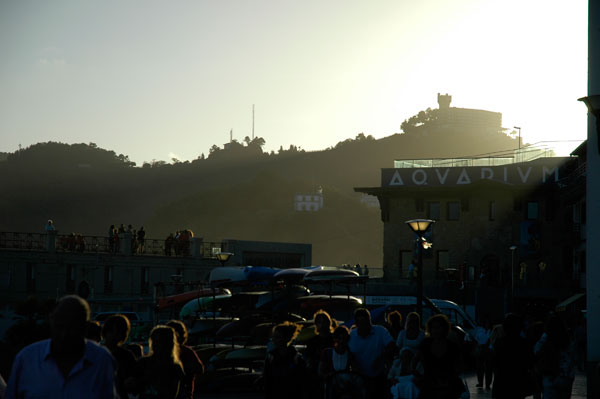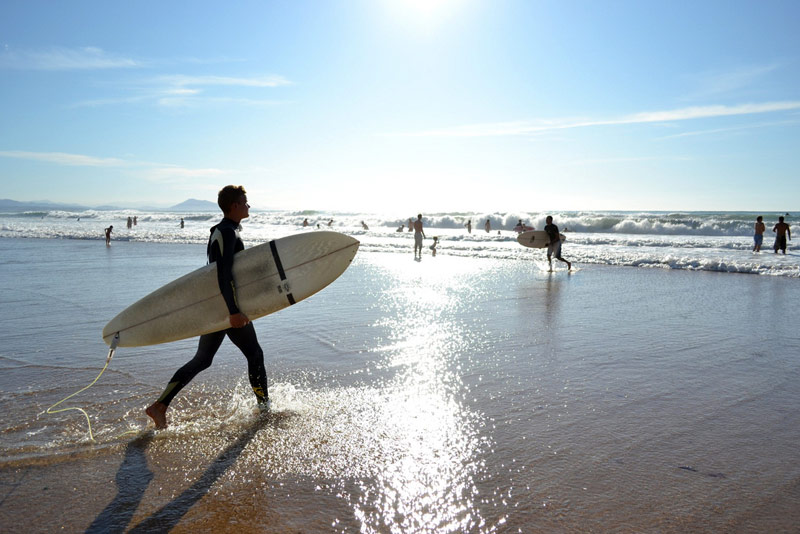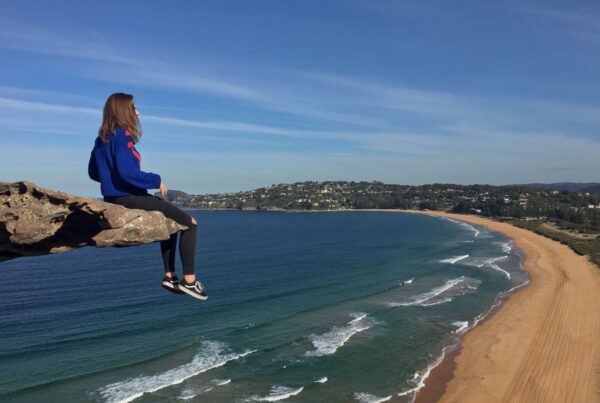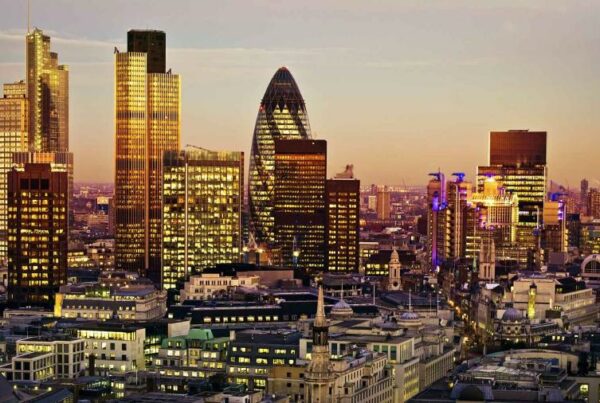The Basque capital is the kind of place it’s hard not to fall in love with. This sheltered corner of the Bay of Biscay has arguably the finest food in Europe (it certainly has the highest density of Michelin stars), stylish streets and warm sunshine that doesn’t reach the punishing intensity of Andalucia, but keeps the temperature pleasant well into September.
San Sebastián is a treat for the senses. The turquoise of the Atlantic Ocean attracts the surfers, the white sand of Playa de la Zurriola attracts the hotties and, to top it all off, the Pyrenees Mountains, the Guggenheim in Bilbao, Pamplona and the rolling vineyards of La Rioja lie within easy reach.
If you’re looking for a sumptuous city destination for your Spanish course in Spain, San Sebastián is hard to beat.
Pintxos
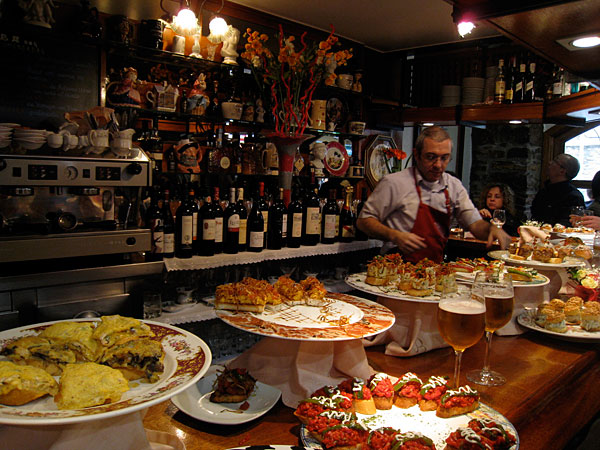 photo: sarahgoldsmith
photo: sarahgoldsmith
Succulent squid, tender peppers, mouth-watering herbs… tapas may have come from the south of Spain but they have been perfected in the north, where they are known as pintxos. Traditionally eaten as a snack after a long day at work and before dinner, the pintxo has been raised to an art form in a city where men join gastronomy societies instead of sports clubs.
The streets of the old town come alive in the evening as people bounce from bar to bar, eating a little here and a little there. Cold pintxos sit on the bar, while you holler orders for warm pintxos at the busy – but never flustered – staff behind the counter. As you wait for your food, watch as txakoli glides through the air before splashing into wine glasses somewhere beneath. The slightly sparkling local white wine is always poured from a distance (apparently it helps the flavour).
When you are done, you tell the staff how much you have eaten and settle the tab… the system runs on trust, so be honest!
Pintxos cost €2-4 and are an unmissable part of the San Sebastián experience. Some of the best can be found at Bordaberri on Fermín Calbetón and Astelena on Plaza de la Constitution, but you really can’t go too far wrong anywhere in the old town.
Reclining on Playa de la Concha
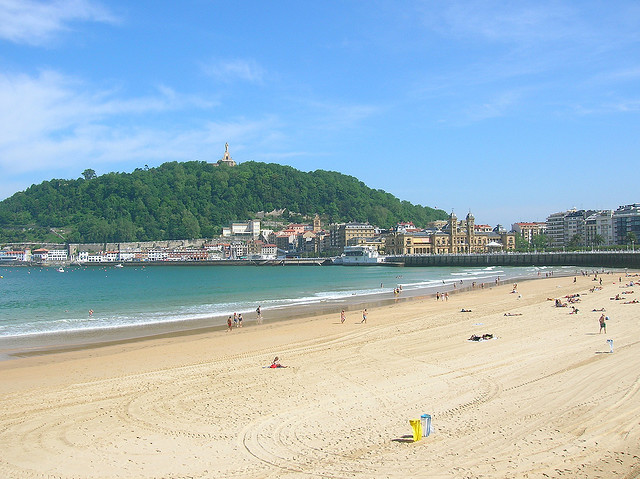 photo: Jose María Rufo
photo: Jose María Rufo
For half of the day, most of Playa de la Concha is underwater. When the tide goes out, this is the most popular sunbathing beach in town. A long crescent of sand stretching westwards from the old town, Playa de la Concha has umbrellas, tents and lounge chairs for hire. There are also fully equipped (and usually gorgeous) lifeguards there throughout the day.
Surfing at Playa de la Zurriola
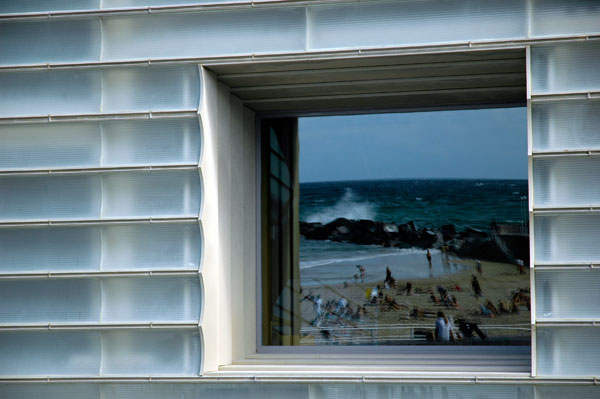
La Zurriola is San Sebastián’s surf beach. While La Concha is protected from the Atlantic by its sheltered location, La Zurriola, like many of its sunbathers, is exposed.
This makes it an excellent spot for surfing, with big Atlantic waves rolling in throughout the day. There are lifeguards on hand in case you don’t turn out to be the next Kelly Slater. Of course, you could just lay back and enjoy the sunshine and cooling breeze.
San Sebastián Aquarium
In San Sebastián’s aquarium, you can find out all about the city’s history with the sea and come face to face with the marine life that has long been an important part of local culture. One of the highlights is a see-through tunnel where you can walk among turtles and sharks.
If you leave the aquarium at sunset, you will be treated to a spectacular palette of pale oranges and reds as the Atlantic waves crash against the sea walls.
The sculptures of Eduardo Chillida
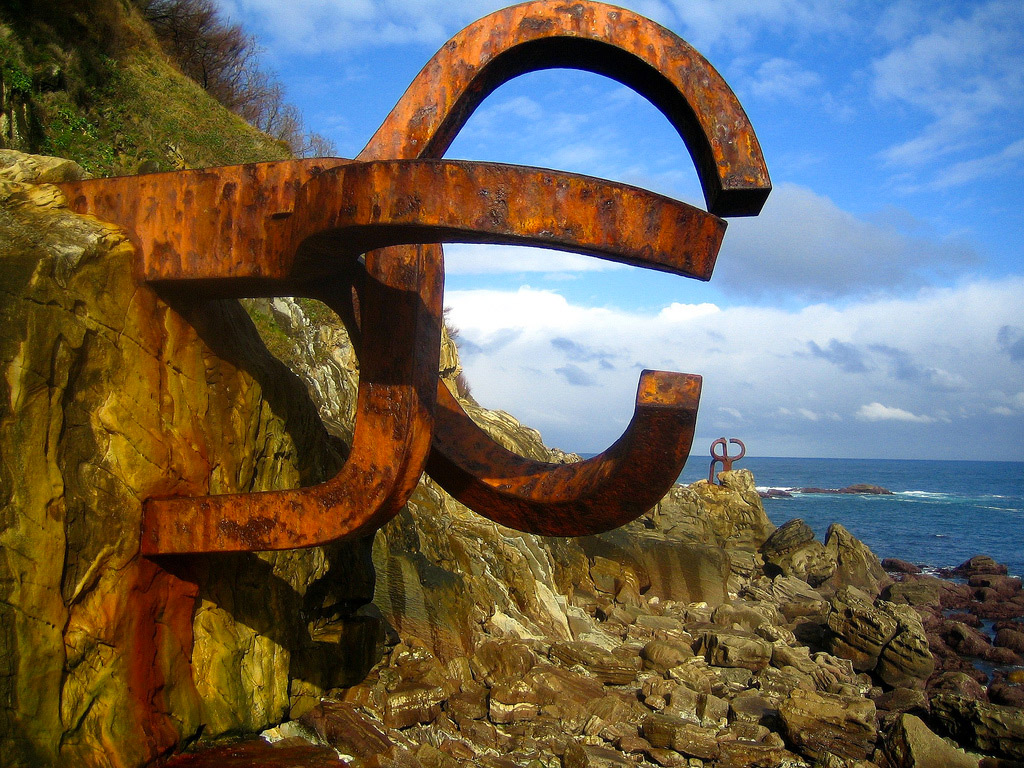 photo: Lanpernas 2.0
photo: Lanpernas 2.0
The distinctive rusty works of sculptor Eduardo Chillida can be found along the seafront. Possibly the most spectacular lies at the westerly end of Ondarreta beach: El Peine del Viento (the Wind’s Comb) seems to grow out of the rocks, where it faces the full force of the Atlantic.
The futuristic vineyards of La Rioja
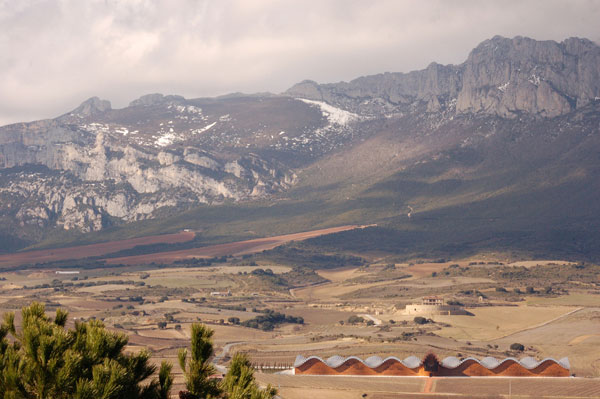 photo: torpe
photo: torpe
If you would like to spend some time exploring the Basque countryside, the vineyards of La Rioja are a couple of hours away by car. As well as producing excellent wine, the bodegas have gone all out on design. Bodegas Ysios and Marques de Riscal have seemingly been transplanted from outer space to the Spanish countryside.
Bodegas Ysios is closed to the public but you can explore the surrounding vineyards, while Marques de Riscal and many other wineries offer tours where you can taste the local produce, learn about the wine making process and eat superb local food.
If you visit in September, the harvest festival in Logroño is great fun. Be prepared for a sore head the next day!
Eusko pilota
If you meet a Basque person with a swollen hand, they have probably been playing eusko pilota. The rules are a bit like squash but you can play with or without a racquet. Players take turns to whack a ball weighing 92-95 grams against a wall in a sport that dates back for centuries.
It’s entertaining to watch and easy to get into, but you will need palms like baseball gloves if you want to be able to pick up pintxos in the evening!
Festivals
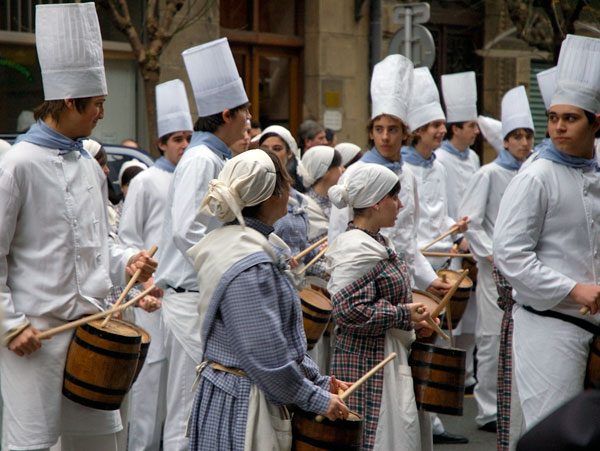 photo: Eztitxu Carton
photo: Eztitxu Carton
San Sebastián is a festive place. Some of the annual highlights include:
The La Tamborrada drum parades in January, when the drums start pounding on the evening of January 19th at the Plaza de la Constitution and keep thundering for the next 24 hours, with only a brief respite at dawn.
Jazzaldia in July, which sees jazz concerts at various indoor and outdoor venues around the city. More than 35,000 people regularly attend the event, which is one of the top jazz festivals in Spain. Nice.
In September, there is a lot going on in town, including the San Sebastian International Film Festival, which attracts international stars to the city. At midday on the first two Sundays in September, the Regatta sees local teams racing fishing boats around La Concha bay. It’s really an excuse to get drunk on cider and often gets wild in the evening!
